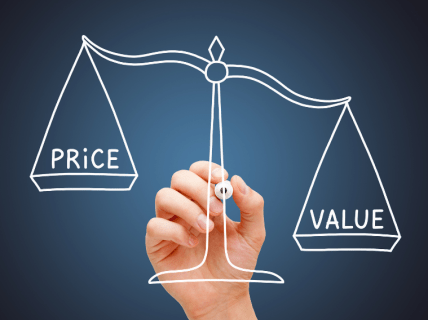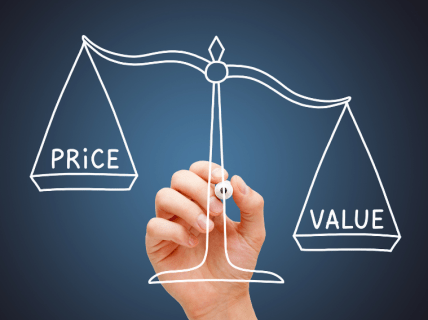How an auto insurance premium is determined or “why is my premium so high?”
Many factors affect the premium you pay for your auto insurance, some are within your control, and some are not. Although insurance companies collect the same basic information, they all have a unique formula to determine how much of an impact each piece of information they collect will have on your insurance premium.
The AIRB has tools and information available on why insurance premiums are increasing, how to reduce your premium, and how premiums are calculated.
The most common factors impacting your insurance premium are within your control; they include driving record, convictions, type of vehicle you are driving, how much and where you drive, how you use the vehicle (for personal or business use), insurance coverage you are purchasing and amount of deductible. By managing these factors, you can lower your auto insurance premium.
We recognize even when you manage the factors in your control, there are still other factors beyond your control which impact your premium. These factors include, but not limited to, economic factors and industry wide trends.
Insurance companies take broader economic factors into consideration such as inflation rate and market condition. As inflation increases, cost of material, parts, labor also increase. During the recent period of high inflation we have experienced since the pandemic, insurance companies have faced higher costs to repair or replace your vehicle in the event of a claim. Inflation increases also influence the cost of medical treatments. If you are injured in the event of an accident, medical expenses may be paid by your insurance company which could increase the overall cost of the claim. In the event of a lawsuit, legal fee and court costs associated with settling a claim could rise due to inflation too.
Inflation also plays a role in other circumstances which might not directly arise from the handling of your claim, for example interest rate, unemployment rate and insurance companies’ operational costs. All the above could impact insurance companies’ investment return and profitability, which may also result in a potential increase in premium over time.
Besides inflation, market conditions could also significantly impact your insurance premium. Insurance company often invest the premium they collect to generate additional income. Fluctuation in interest rates, stock market performance and economic volatility can impact a company’s investment return. Changes in investment return influences insurance companies’ pricing strategies, which potentially cause higher rates. In a competitive market, companies tend to adjust their rates to attract or retain customers. Which could result in a higher premium. Regulatory changes and product reforms can also directly impact insurance rates.
We have discussed all the factors that directly and indirectly impact insurance premiums. We can now discuss the market trends in Alberta to examine why premiums in Alberta are among the highest in Canada.
In 2023, the average premium in Alberta was $1,669 (Basic Coverage: $1064.82, Optional Coverage: $557.46, Other coverages: $46.72), which ranked the second highest in Canada, lower than Ontario’s premium of $1,824.

When setting the price of auto insurance, insurance companies must make sure the premium they collect from the driver covers the cost of the future claims.
Inflation
Recently inflation reached been the highest level in the last ten years. A higher inflation rate will directly impact the claims severity (amount of claim payout). Inflation increases the cost of raw material, manufacturing, and transportation, which directly and indirectly cause the price of vehicle parts to increase. Inflation also causes the labour cost to increase. Various industries will have to increase the wages and salaries to keep up with the rising cost of living. At the same time, operating costs rise too and consumers may notice higher bills for repairs as auto body shops needs to adjust their cost to reflect the inflation.
The other factor that is driving up repair costs is the complexity of the technologies. For example, front view camera mounted to a grille is now standard on a 2021 Ford F-150. It was not available in 2020 model year. The cost of the front view camera is $330.88. For a Nissan Rogue the increase in rear bumper assembly components caused the MSRP (manufacturer’s suggested retail price) to increase by $529.37.

Increase in number of cars on the road and population
Due to COVID-19, vehicle inventory became a big factor due to supply chain issues. The lack of inventory in the market created pent up consumer demand for vehicles. As the supply gradually improved starting last year, the vehicle sales reached its highest level since the pandemic. Another factor that pushes up vehicle sales over the past year has been population growth. The Government of Alberta stated “Alberta‘s population growth continues to accelerate. In the 12 months preceding April 1, 2024, the province’s population expanded by 204,677 people, or 4.41%.”[1] “This represents a significant increase from the previous year (3.67% between 2022-23) and the highest April 1 year-over-year growth rate since 1981. Alberta’s population expanded by 49,138 residents over the first quarter of 2024, or 1.02%.” Statistics Canada data suggested commuting to work via a vehicle is still the main method of transportation in Alberta. Although newcomers rely on public transportation to a certain degree, the majority still use a vehicle to commute. With more vehicles on the road, the likelihood of getting into an accident also increases.
Auto Theft
In 2022, auto theft was up 18% after several years of decline in Alberta according to Équité Association[2]. The increased demand for vehicles created a market for organized crime. The large increase in the number of thefts contributes to the higher comprehensive loss costs. According to Insurance Bureau of Canada, the cost to replace stolen vehicles in Canada reached 1.5 billion, which is an increase of nearly 20% from 2022.[3] Vehicle theft is a significant cost driver for comprehensive coverage premiums. The Équité Association has estimated the financial cost to consumers, police, insurance companies, and governments to be more than one billion dollars annually. With Alberta’s high vehicle theft rates, a significant amount of these costs will be experienced within the province.
Government Regulation
Government regulation added uncertainty to the auto insurance pricing as the government considers longer term reforms to make auto insurance more affordable for Alberta drivers. There is also the inherent uncertainty present in the business of insurance. In 2023, a Ministerial Order to prohibit the AIRB from approving any rate increase until 2024 was released. Although the Ministerial Order prohibits any rate increase on an insurance company’s rating program, some drivers still experience rate increase at renewal based on the previously approved rate increase that was implemented before the Ministerial Order. Premiums could also increase during the rate pause if a driver has a new at-fault claim, traffic violation, change vehicle and/or change address. In January 2024, Government of Alberta implemented the “Good Driver Rate Cap” to limit how much insurance companies can increase premium for drivers who have no at-fault accidents or convictions in a certain period. This regulation focuses on protecting “good” drivers from seeing a significant rate increase.
The primary goal for an insurance company when determining their pricing is to develop a rate structure which allows them to compete effectively and earn a reasonable profit. Alberta’s regulatory framework focuses on balancing consumer protection and maintaining a competitive insurance market. Therefore, changes in regulations can have varied impacts on auto insurance premiums, depending on how it impacts insurance companies’ costs due to rising legal fees, theft, and inflationary increases on cost of vehicle repairs.
[1] Current provincial population estimates | Alberta.ca
[2] Vehicle theft reaches a crisis level as Canada becomes a source nation for illegal trade (equiteassociation.com)
[3] New data shows severity of Canada’s worsening auto theft crisis (ibc.ca)





